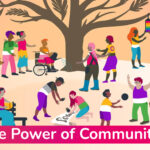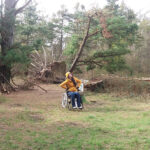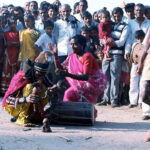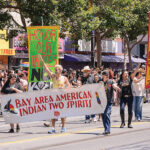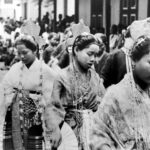Transgender Day of Remembrance
TDOR, or the Transgender Day of Remembrance, is observed annually on November 20th, worldwide. It’s a solemn day, dedicated to honouring the memory of transgender people whose lives were lost due to acts of anti-transgender violence. The day was founded in 1999 by Gwendolyn Ann Smith, a transgender advocate, in response to the murder of Rita Hester, a Black transgender woman whose death, like many others, was met with silence and misgendering in the media.
Why Trans People Mark the Day
Trans people and allies mark TDOR for several vital reasons:
- To Honour and Remember
The day is a vigil, and an acknowledgment of the real human cost of transphobia/hate crime across the world. It offers a space to mourn those who have lost their lives, often violently and prematurely, and is often done so as a community event.
- To Raise Awareness of Transphobia
Many trans deaths, especially those of trans women of colour, go underreported, or are misrepresented in the worldwide media. TDOR helps bring visibility to the scale and nature of the violence aimed at trans people across the world.
- To Demand Justice and Societal Change
It is not only about remembrance but also about calling attention to systemic failures in policing, healthcare, housing, employment, and media, that frequently leave trans people across the planet, vulnerable.
- To Build Community and Solidarity
In a world that regularly devalues or dehumanises trans lives, TDOR creates a moment of collective support, grief, and strength. This allows us to remember those lives lost, and to redouble our efforts in fighting for an end to transphobic hate crime.
Learning from TDOR
The loss of so many trans lives, especially trans women of colour, is a symptom of deeper societal issues that society needs to address. Not by doubling down on transphobic legislation, and creating an environment that allows hate crime and prejudice to flourish, but by working in a collaborative and positive way with trans people, on anything that might affect us.
1. Transphobia Is Intertwined with Racism, Misogyny, and Poverty
- Many victims are not only trans, but are also marginalised by race, class, and sex. Intersectional oppression creates dangerous conditions where basic safety, for trans people, is often out of reach. TDOR recognises this, when remembering trans and nonbinary victims of violence, and hate crime.
2. Visibility Without Protection Is Dangerous
- While trans people are more visible in media and society today, that doesn’t always translate to safety. In fact, visibility can make some trans people far more vulnerable, if it isn’t accompanied by legal protections and cultural acceptance.
- In fact, conversely, it’s the sheer pressure of hate groups trying to make us more unsafe, that will have the direct negative effect of having most trans people hidden from society. That’s the goal of the hate, but it is simply not good enough in a supposed ‘enlightened’ age, and politicians need to address this with confidence, and conviction.
3. Media and Institutions Must Do Far Better
- Victims of transphobia, and violence, are regularly misgendered in the press, or have their identities erased by media and law enforcement, such that it compounds the trauma the individuals, their families, and our communities face. The media is often complicit in conflating being trans with certain societal problems, and suggesting we are dangerous to society, when the stats simple do not support this. They are also guilty, when trying to find ‘balance’, of platforming hate groups.
The media obscures the truth about the vitriol directed towards trans and nonbinary people, and instead changes the narrative, to try to show that trans people are at fault for any problem right wing commenters would like to blame us for.
4. Hate Crime Prevention Requires Systemic Change
Solutions must go beyond individual interventions. They include:
- Ensuring access to specialist healthcare for trans people
- Combating homelessness, and employment discrimination, ensuring trans people can contribute as effective members of society.
- Reforming how politicians, the police, and the media interact with trans communities, beyond waving a few flags at a pride event. Understanding the trans community is key, and that means more must be done to engage with us constructively, and with our safety and lives in mind.
- Supporting education that dismantles transphobic hate early in schools, and society in general. Trans, and nonbinary people should be able to participate in society, and so society at large needs to be educated on the true trans agenda…
…to simply live our lives in peace.
TDOR is not just a day of remembrance, it’s a call to action every November 20th. It reminds us that trans people deserve to live full, dignified lives free of fear and violence. By confronting the root causes of anti-trans violence, prejudice, ignorance, and systemic inequality, we honour not only those we’ve lost but also help to ensure that others’ don’t share their fate.



